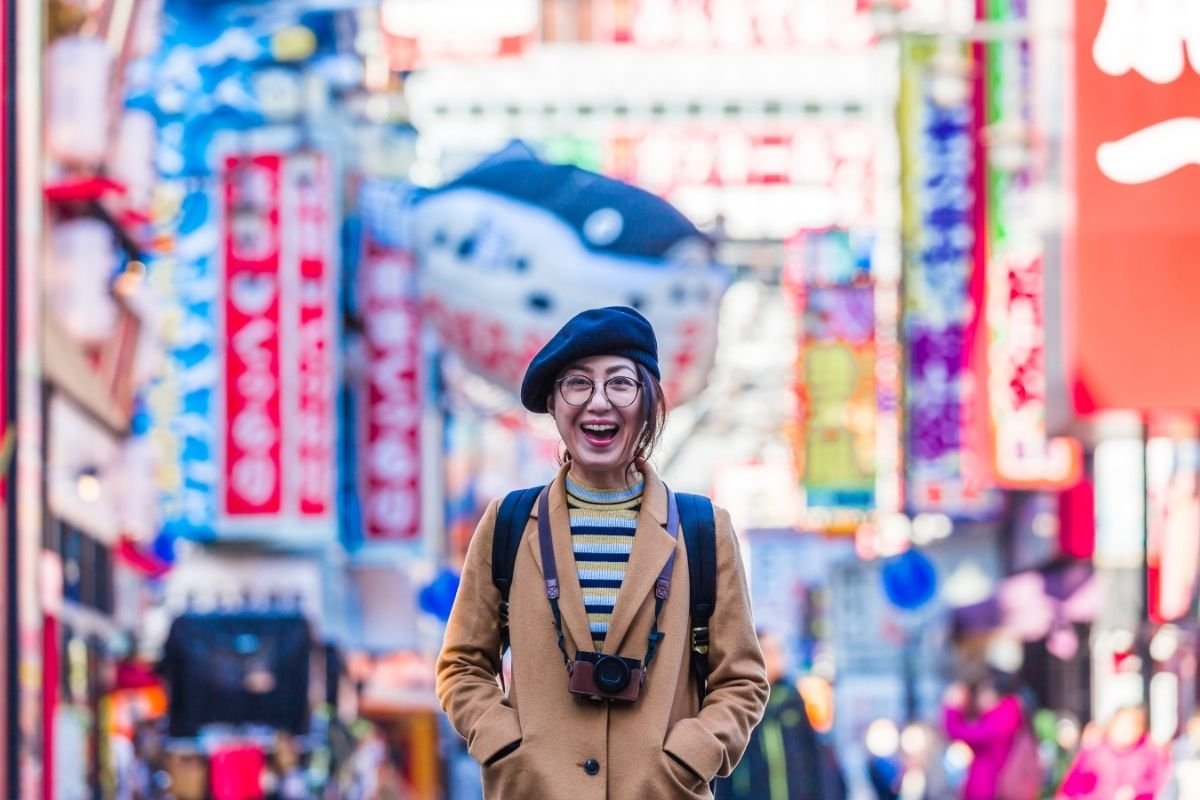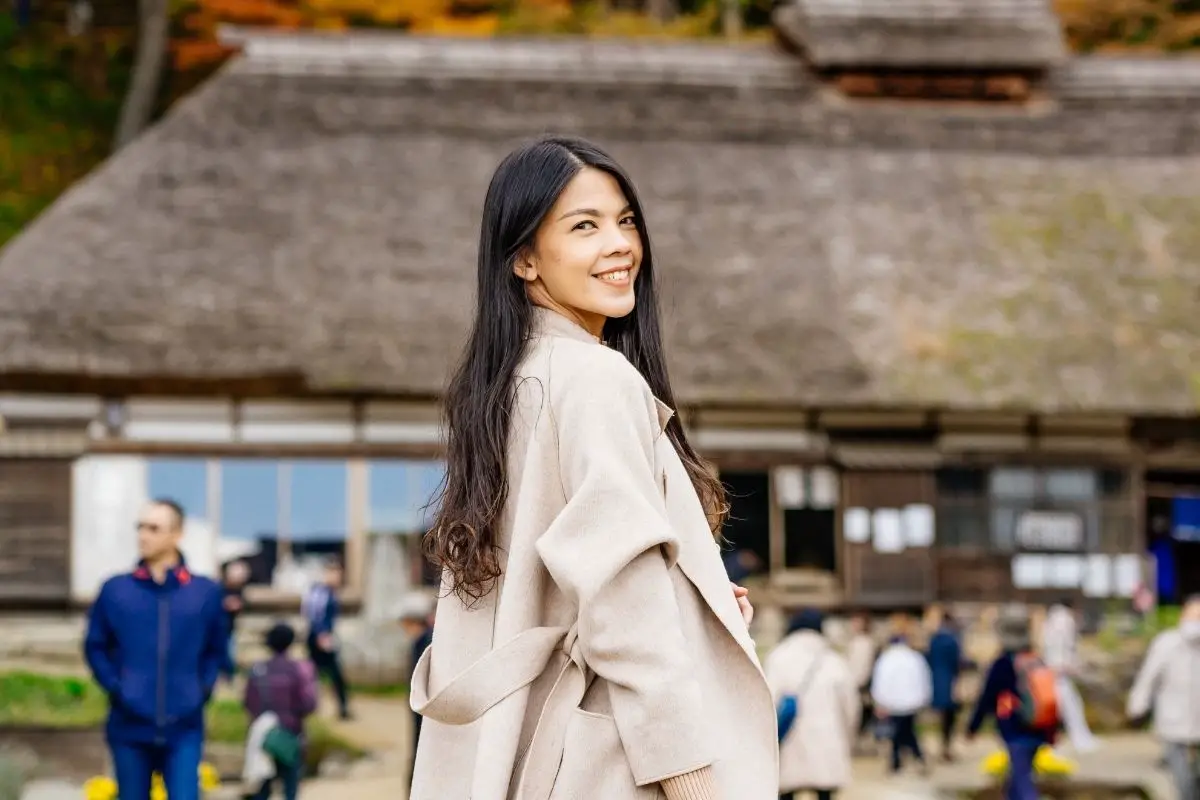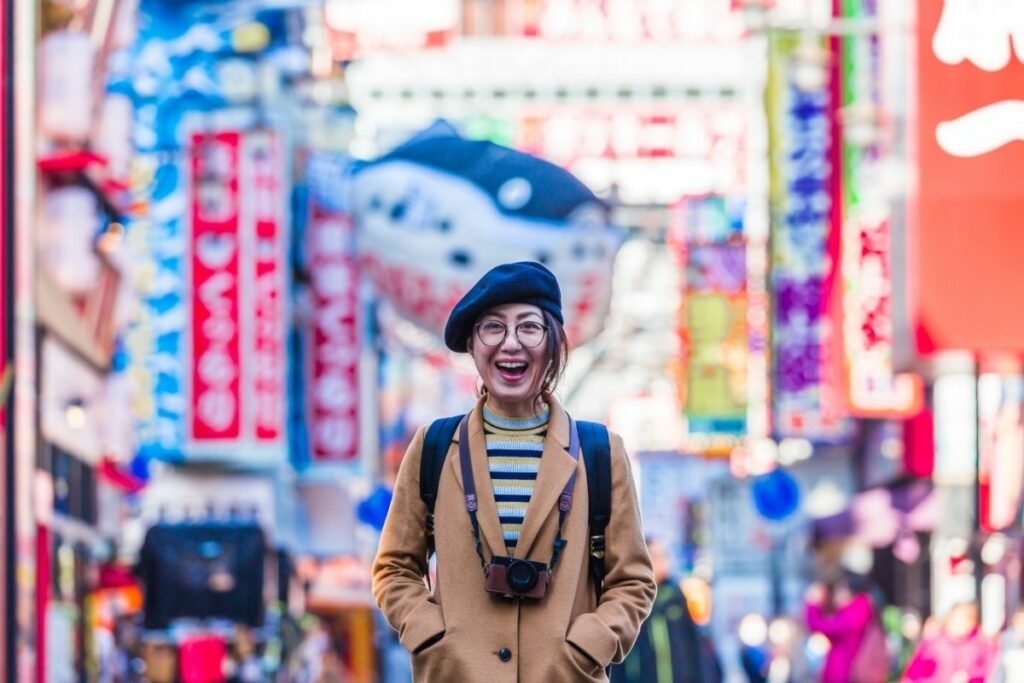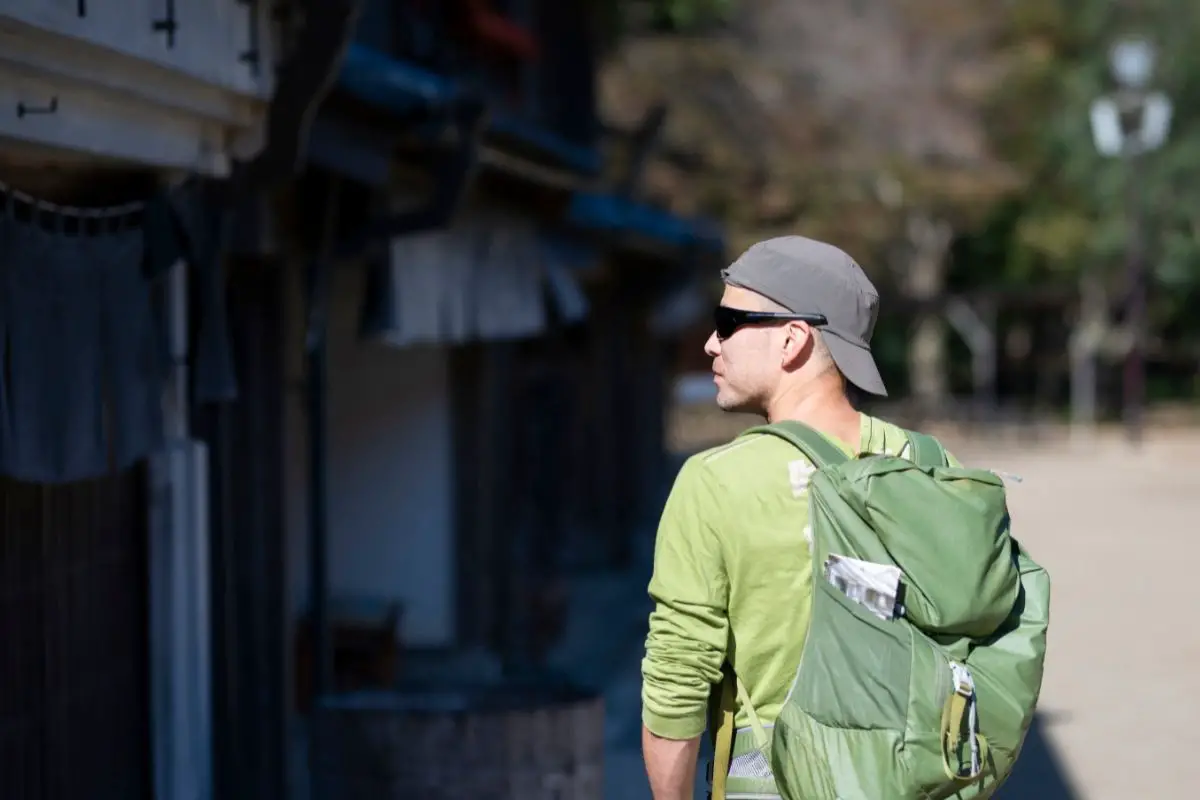If you’re planning a visit to Japan, then it’s crucial that you know what clothes you should pack. You’re also going to need to know some top style tips, to make your stay in Japan comfortable.

In this article, we will discuss what to bring to Japan for every season, and what styles you should definitely avoid.
Style Advice For Japan
The Japanese dress code is, overall, quite conservative. That means that you will have to be respectful of culture, and wear outfits appropriate for the occasion.
With that said, the younger generation of Japan is known for their wild and crazy outfits. You’ll witness a range of styles, each showing individual creativity.
In this subset of culture, it’s fine to be more experimental with your style. If you want to wear more daring and bold clothes, this is more acceptable in Tokyo, especially Harajuku.
It’s also important that you look polished and put together in Japan.
Any clothes with noticeable rips are frowned upon. You should try to look neat and tidy whenever possible. This is also vital when it comes to the socks that you wear.
You cannot wear socks that have holes in them. In Japan, you will often spend time with your shoes off. This is especially so in traditional restaurants, temples, and shrines. It is disrespectful to visit these sacred places without making an effort to be clean and tidy (see also, ‘Why is Japan so Clean?‘).
If you’re a woman (see also, ‘What is a Kunoichi?‘), and you plan on buying your clothes out in Japan, make sure that you bring enough clothes to last you the whole trip. This is because the sizes in Japan are drastically different from most western countries.
Native Japanese women are incredibly petite, as are men – which means the clothing sizes are much smaller than in western countries. It can be difficult to find clothes that fit, even if you have a small figure.
Be aware of the fact that tattoos in Japan can be very dangerous. Tattoos are usually linked to the mafia. Those with tattoos are banned from many places, for safety and security reasons.
If you have any tattoos, it may be wise to cover them up, depending on which city you visit. Even small tattoos may be problematic. To be safe, carry and wear clothing that covers up your tattoos, or purchase a tattoo concealer.
What To Wear In Japan During Spring (March/April/May)
If you are visiting in the spring, you can expect warmer weather to begin to rise. While it will still be chilly, it will not be as cold as the winter months, especially from April onwards.
The mornings and evenings can be especially cold, so it is vital that you bring thermals, and layer your clothing. Bringing a jacket is always advised, as if you get too warm, you can remove it, without being braced with too much chilly air.
For women and men, it is advisable to bring a coat or a jacket. You should also make sure that you bring thermal layers, a sweatshirt, and warm trousers. Any hats and gloves are also a good option.
Women should ensure that they bring a good pair of warm tights if they choose to wear skirts or a dress.
In May, the temperature starts picking up, and it gets much warmer. It is still advisable to bring a jacket and warm layers, but items such as hoodies and cardigans, as well as t-shirts, are also more regularly worn.
What To Wear In Japan During Summer (June, July, August)
The months of June and July are called the rainy season.
This means that there is a lot of rain (see also ‘Does It Rain A Lot In Japan?‘) during these months and that there is an increase in humidity. Due to the rainfall, the temperature often drops, which means that you have to pack a range of clothes – some for warmer days, and some for much colder days.
During June and July, it is advisable for both men and women to pack outerwear. You should also pack a rash guard, to prevent UV protection (see also, ‘How to Pack for Japan‘).
Any cotton shorts or airy trousers are also great, due to the increased humidity. Sneakers and sandals are a must, along with hats and sunscreen.
For August, you can pack a little differently.
August is Japan’s peak summer month, and the temperature rises to extremely high levels during this month. It’s very common for people to suffer from heat strokes, or become very ill from the heat.
This is especially common in big cities, where people suffer from ‘urban heat island’.
That basically refers to the fact that the tall buildings absorb the sun, and prevent any wind from reaching, which makes the temperature of the city soar.
In this month, both men and women should opt for light, airy clothing. Men should wear airy shirts, jeans, cotton shorts, sneakers, and sandals.
Women should wear sleeveless tops, wide pants, cotton shorts, light skirts with sneakers, and sandals. Hats and sunscreen is a must, along with sunglasses.
What To Wear In Japan During Fall (September, October, November)

The fall months are very beautiful in Japan (see also ‘When Is Fall In Japan?‘). There is so much color from the trees, that even a walk in the park looks spectacular.
The temperature difference in these months can be quite high. In September, the heat is drastically less than the summer months, but it is also the month of typhoons and can be incredibly rainy. It’s best to keep an eye on the weather forecast, and always wear layers.
October is a very lovely time of the year. The temperature is not too hot, and it is not too cold. There is still a chance for tycoons, but the rain is a lot less than in September.
Cardigans, sweatshirts, and jeans are great for this time period. So are denim jackets, and any type of coat.
In November, the temperature starts to drop. That means it’s vital to bring any jackets and jumpers, to ensure that you keep warm. While some days are not too bad, it can get very cold. Jeans, cardigans, sweaters, and shirts are all necessary for this month.
What To Wear In Japan During Winter (December, January, February)
In the colder months, it is critical that you pack for the weather. It can get very cold and dry, and as the temperature changes very quickly in Japan, you do not want to be wearing light clothing in the winter months.
With that said, it is always a good idea to layer your clothes. This is because indoor heating tends to be very good in most cities. That means cardigans and shirts can still be worn indoors.
In December, you can expect to see snow, so you should prepare for the chance of snowfall. Any thermals and knitted clothes are vital for surviving Japan’s cold weather.
The real cold month is January. In fact, it is Japan’s coldest month of the year. You need to ensure that you pack properly for this month because the weather can be very extreme.
That means packing a range of coats, sweaters, and thermals to ensure you stay warm. While indoor heating will still be working well, the outside temperature will be very low, so ensure that you pack accordingly.
In February, the temperature is a little gentler. It is still very cold, and snowfall can occur. At the end of February, warmer temperatures start to emerge.
However, it is still best to bring a lot of layers and warm clothes for February. Hoodies, sweaters, thermals, and trousers are vital for both men and women.
Summary
Whatever month you choose to visit Japan, you will enjoy this beautiful country. You need to thoroughly ensure that you pack accordingly for each month.
While you can expect some rain in the months of June and July, the temperatures in August are incredibly high.
Likewise, December and January will always be colder months, and while indoor heating is usually supplied, you need to make sure that you pack warm clothes.









